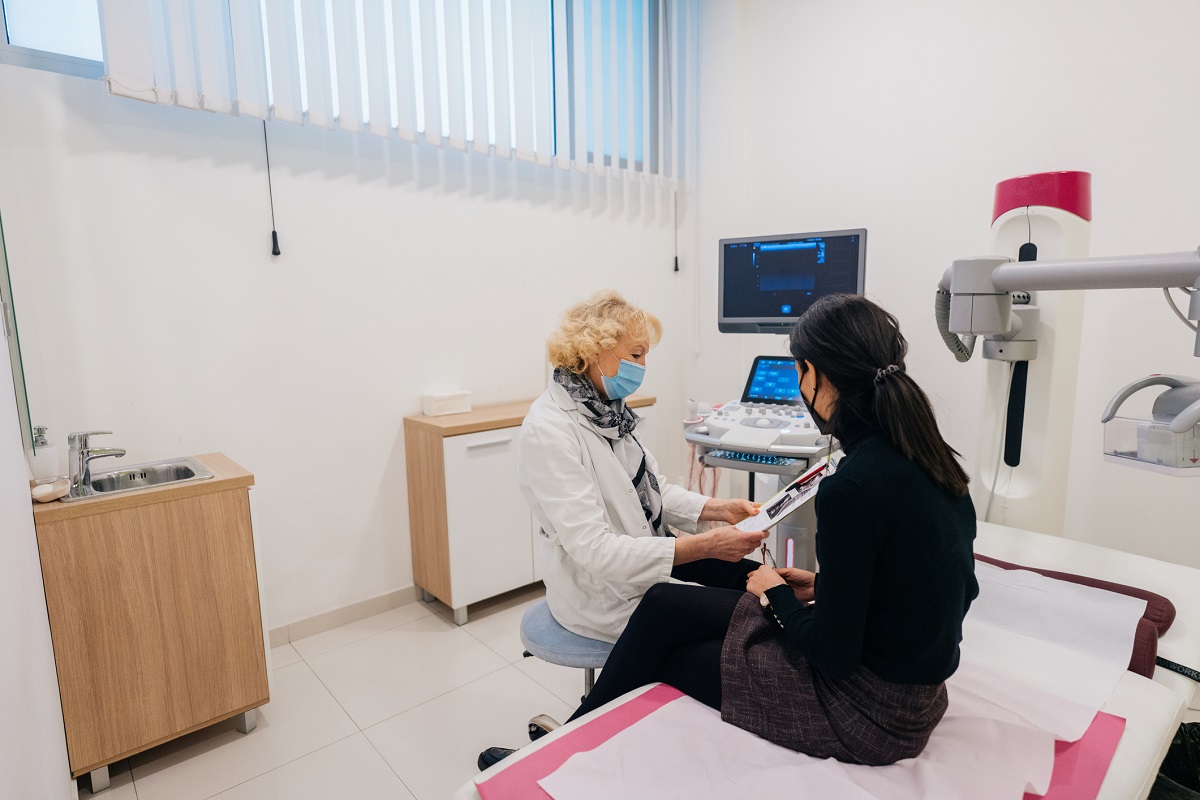The Medical Minute: Mammograms and the COVID-19 vaccine

Some women who have gotten vaccinated for COVID-19 have noticed a startling development ― lumps that in the past might have meant cancer.
As health care providers stress the need to get back on track with regularly scheduled exams, they also want women to know how the COVID-19 vaccine might affect both the timing and possible results of their tests.
Swollen lymph nodes, caught on film
COVID-19 vaccines may cause temporary swelling of the lymph nodes in the armpit — called the axilla — in the same arm that was injected. This is normal and expected, said Shelley Tuzzato, chief technologist for outpatient imaging at Penn State Health Lime Spring Outpatient Center.
“Swollen lymph nodes mean that your body is mounting a response to a possible infection,” Tuzzato said. “It could be a simple as a hang nail or a cut on your skin. Or it could be a response to a vaccination.”
Make no mistake, all lumps should still be taken seriously. If a woman discovers one on her own, whether on her breast or in her armpit area, she should contact her doctor for evaluation. But some cases of axillary adenopathy — a change in the size and consistency of lymph nodes in the axilla — only become evident with a mammogram.
Although very rare, occurring in just .02 to .04% of screening mammograms before the COVID-19 vaccine became available, “when a mammogram did show axillary adenopathy, our radar would go up,” said Dr. Julie Mack, a physician with Penn State Health Breast Center. “The reported malignancy rate for a clearly abnormal lymph node is variable — anywhere from 20% to 50% — so we take it seriously.” The cancer could be in the breast or another part of the body or within the immune system itself.
Prescreening and a conservative approach
“Prior to the vaccine, if we found an abnormal lymph node that we couldn’t explain, we would often biopsy it,” Mack said. “Now we correlate the finding to see if it is in the same arm where the shot was recently given. If it fits the typical pattern of benign adenopathy seen after a Covid vaccine, we’ll follow the guidance from the Society of Breast Imaging and follow it with a repeat imaging study to make sure it decreases in size.”
They’ll check again in six to 12 weeks to make sure the swelling has gone down.
“Cancer doesn’t get better on its own,” Mack said.
To help lessen the chances a mammogram might pick up a temporary side effect of the COVID-19 vaccine, schedulers prescreen women for a recent vaccination.
“Our schedulers will ask if they’ve gotten the Pfizer or Moderna vaccine, and if so, when,” Tuzzato said. “If the patient is not significantly overdue for an annual screening, they’ll explain that it’s recommended that they wait for four to six weeks after their second dose.”
Patients who have a specific concern — such as a lump or unusual changes to their breast — should call their doctor and schedule a diagnostic mammogram right away, regardless of when they might have received the COVID-19 vaccine, Tuzzato said.
Protect your health
Screening is voluntary, something done on an annual basis for patients who have no symptoms. It can be delayed for a bit, but not for months on end, Mack said.
“A screening mammogram is the one proven way to lower the mortality rate from breast cancer” Mack said. “And the vaccines are the best protection against developing serious illness, hospitalization and death from COVID-19. So if you are soon due for your screening exam, get vaccinated, and then in four to six weeks come in for your mammogram.”
Related content:
- The Medical Minute: Breast density — Separating myth from fact
- The Medical Minute: What to expect post-vaccine
The Medical Minute is a weekly health news feature produced by Penn State Health. Articles feature the expertise of faculty, physicians and staff, and are designed to offer timely, relevant health information of interest to a broad audience.
If you're having trouble accessing this content, or would like it in another format, please email Penn State Health Marketing & Communications.
